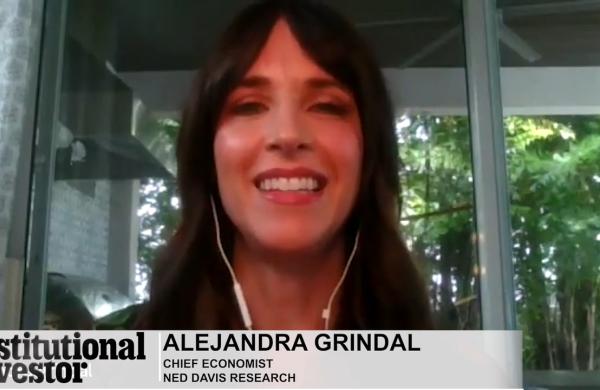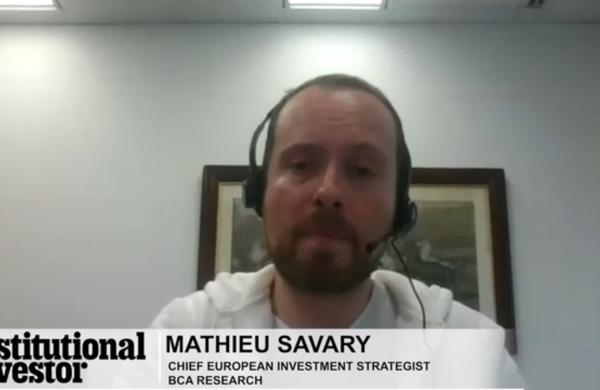Click here to view the entire 2003 All-Europe Fixed Income Research Team results available in the Research & Rankings section of this site.
The fledgling market in European corporate credit has had to grow up fast. New-issue volume exploded by 46 percent between 1999 and 2001, only to plummet by 32 percent last year as debt issuers struggled to repair their balance sheets. Sharp downgrades at such leading European credits such as Royal Ahold and ABB have jolted investors and fixed-income analysts alike. "It's been like a lifetime in the market in four years: explosive growth, a bull market, a total blowup and then stability for the last month," sums up Gary Jenkins, global head of credit research at Barclays Capital in London.
Before the adoption of the euro in 1999, highly rated banks and sovereign and supranational agencies dominated the European bond market, issuing in various European currencies. For investors, the currency mattered more than the credit. The euro eliminated currency-based yield differentials, and the ability to analyze credit risk suddenly became a prized skill.
And the skill of fixed-income analysts has been sorely tested in the past 12 months, as yield spreads on euro-denominated corporate bonds have jumped all over the place. According to Morgan Stanley, they widened from 78 basis points over asset swaps in May 2002 to more than 129 basis points over in October before tightening back to 73 basis points over by early May 2003.
Feeding market uneasiness was a slew of downgradings. In 2002, Standard & Poor's lowered EUR43.7 billion in European debt from investment grade to junk, compared with just EUR6.2 billion in 2001. Uncertainties about credit quality were so rampant last year that anyone holding high-yield debt paid a big price. Lehman Brothers reports that the sector lost 0.49 percent even as investment-grade corporate bonds and other high-grade debt enjoyed a stellar 9.46 percent return.
This year the market has been turned on its head. Increased investor appetite for risk has helped push high-yield bonds up a whopping 15.41 percent through early May, against investment grade's measly 2.33 percent rise, according to Lehman. Credit analysts must decide whether the market has gone too far. Spread differentials between higher- and lower-quality bonds have compressed so tightly that they don't adequately reflect the credit-quality differences among issuers, says John Fusek, co-head of European credit research at Goldman Sachs International and leader of the No. 3 team covering high-yield consumer products, who observes that the market still has a tendency to rush to extremes. The yield on struggling Vivendi Universal's notes shot up to an eye-popping 25 percent in September 2002 before cooler heads prevailed. By early May the French entertainment conglomerate's securities yielded just 6.5 percent. "That was a clear overreaction by the market," Fusek says of the spike.
It was also a clear buy signal for alert analysts. Finding such opportunities -- and handling the many challenges of a difficult fledgling market -- is no easy chore. For even the best bond analysts, highlighted on these pages, expertise is hard-won. Taking first in Institutional Investor's second annual All-Europe Fixed-Income Research Team are the analysts from J.P. Morgan, who are cited most often by investors for their excellent work. This year the firm garners 15 team positions, compared with just six in 2002, when it tied for third place with Deutsche Bank and Goldman Sachs International. Deutsche Bank takes second this year with 12 positions. Barclays Capital, BNP Paribas, Goldman Sachs and Morgan Stanley tie for third with eight team positions each.
If last year's volatile markets gave sell-side analysts a few gray hairs, that may be not be such a bad thing, according to investors. "I think, because there are fewer new faces and teams have also managed to bed themselves down better, there has been generally better, more comprehensive coverage," says Ingrid Iversen, fund manager for emerging-markets debt at London-based Insight Investment, which runs EUR400 million in such securities. Our survey bears her out: When we asked buysiders whether they thought bond research had improved over the preceding 12 months, more than 53 percent of those answering said it had.
The rankings were compiled by Institutional Investor under the direction of Senior Editor Jane B. Kenney, Assistant Managing Editor for Research Lewis Knox and Associate Editor Emily Fleckner. Knox wrote this overview.
Click here to view the entire 2003 All-Europe Fixed Income Research Team results available in the Research & Rankings section of this site.





